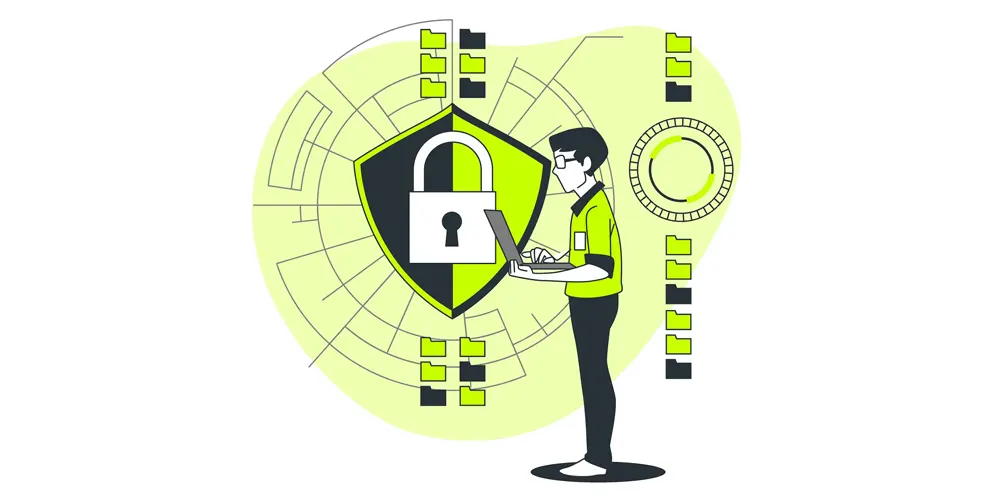Understanding the 9 Key Objectives of a VoIP Network Security Audit
The line, “the devil is in the details” holds a lot of significance when it comes to the security of a VoIP network and its infrastructure. We already know the significance and importance of conducting a VoIP Network Security Audit.
Yes, it secures your network but how does it do so? What objectives should a good VoIP network security audit aim to accomplish? You see, without a detailed plan and brief, one will not achieve the desired results from a security audit.
Knowing the details of what each objective entails and how it is executed will help you secure your VoIP network properly.
We shall take a deep dive into all the important objectives of the audit. This will help you understand what needs to be achieved for each objective.
When executed properly, each accomplished objective will add tremendously to the improvement in the security for your VoIP network.
Let’s begin then, shall we?
1. Identify Vulnerabilities

A VoIP network security audit is essentially a comprehensive examination of the network's infrastructure and practices. The aim is to identify any weaknesses or potential points of exploitation.
This meticulous scrutiny serves as a crucial first step in ensuring the confidentiality, integrity, and availability of voice communications.
During the audit process, various techniques such as vulnerability scanning, penetration testing, and code review are employed to uncover vulnerabilities.
Once identified, these vulnerabilities can range from insecure configurations to software flaws or inadequate access controls. By identifying these vulnerabilities, organizations can then take targeted actions to address them.
This may involve implementing many actions. Some of which are robust encryption protocols to protect against eavesdropping, enhancing access controls to prevent unauthorized access, or fortifying network defenses against potential threats.
By shedding light on vulnerabilities, organizations gain insights into potential security threats. They can make informed decisions on allocating resources and prioritizing security measures.
This proactive approach helps safeguard sensitive data and maintain uninterrupted service availability. Compliance with industry regulations and standards, such as HIPAA or PCI DSS, where applicable, can also be ensured.
2. Threat Detection

The core objective of threat detection is to establish a proactive defense mechanism against potential security risks and vulnerabilities within the VoIP infrastructure.
This strategic endeavor leverages a suite of techniques and sophisticated tools to continuously monitor and analyze the entire network. Through this ongoing surveillance, any suspicious activities and anomalies are promptly identified.
The audit achieves this by scrutinizing various aspects of the VoIP network. This includes call traffic patterns, user authentication logs, and system logs. It keeps a watchful eye for telltale signs of unauthorized access attempts, unusual traffic spikes, or payloads that could indicate malicious intent.
By swiftly detecting and responding to these emerging threats, organizations can effectively neutralize potential security breaches, data compromises, or service interruptions.
In essence, a VoIP network security audit serves as a vigilant guardian. It tirelessly scans the digital realm for signs of danger.
Its mission is to ensure the early detection and proactive response to any security vulnerabilities or threats. Thereby bolstering the overall security posture of the VoIP communication system, safeguarding its integrity, confidentiality, and service availability.
3. Data Protection

You’d be surprised to know the level and amount of sensitive information that changes hands over a voice call. No customer wants this information to leak and make its way into the hands of any bad actors.
So to safeguard the confidentiality, integrity, and availability of sensitive information transmitted over the network is an important objective of a VoIP Network Security Audit.
Such audits aim to fortify data protection by meticulously evaluating the VoIP infrastructure and associated practices. This involves assessing the encryption mechanisms, access controls, user authentication, and overall security of the network.
By doing so, a VoIP network security audit helps to ensure that sensitive voice data remains shielded from eavesdropping or interception.
Furthermore, the audit assists in the prevention of data tampering or unauthorized access. It accomplishes this by identifying vulnerabilities in the system.
Which, if exploited, could compromise data integrity or enable unauthorized parties to gain access to valuable voice communications. By detecting these weaknesses, the audit facilitates timely remediation.
Additionally, the audit ensures uninterrupted availability of voice data by identifying and addressing vulnerabilities that may lead to service disruptions or downtime.
4. Compliance Assurance

Considering the important role communication plays in the functioning of our world, the regulators and lawmakers rightly want to keep everything in check. Their objective is simple, safe and accessible communication for all parties involved.
A VoIP network security audit thus, also ensures that the VoIP infrastructure adheres to industry-specific regulations and security standards.
It helps accomplish this by meticulously examining the network's configuration, policies, and practices in alignment with relevant compliance requirements.
These requirements could include industry-specific regulations like HIPAA (Health Insurance Portability and Accountability Act) for healthcare or PCI DSS (Payment Card Industry Data Security Standard) for payment processing.
During the audit, assessors evaluate whether the VoIP network complies with mandated security controls, data protection measures, and privacy standards. They also verify that appropriate documentation and records are in place to demonstrate compliance efforts.
By conducting this audit, organizations can ensure they meet legal obligations, protect sensitive data, and reduce the risk of regulatory fines or legal consequences associated with non-compliance.
5. Incident Response Readiness

Things go wrong at times and when they do it's quite unexpected and you’re caught unprepared. Therefore, it's always advisable to be prepared for any possible incidents.
An Incident response readiness seeks to ensure that an organization is well-prepared to detect, respond to, and recover from security incidents affecting its VoIP infrastructure.
This is achieved by evaluating the effectiveness of incident response plans, procedures, and resources in place. A VoIP network security audit helps accomplish this goal by rigorously examining the existing incident response framework.
Assessors assess the organization's ability to identify and mitigate security incidents promptly. They scrutinize the effectiveness of incident reporting and escalation processes. The coordination among various stakeholders involved in incident response is also put to the test.
Organizations can identify weaknesses or gaps in their incident response capabilities, enabling them to implement improvements proactively through this audit.
Furthermore, it also assesses the organization's capacity to recover from incidents swiftly and efficiently, minimizing potential disruptions to VoIP services.
6. Access Control Validation

Imagine what would happen if random people ended up with the keys to your house or the password to your bank account. Sounds terrifying, doesn't it? Something similar if not scarier can happen if bad actors gain access to your VoIP network.
The central objective of access control validation is to ensure that the appropriate safeguards are in place to control and manage user access to VoIP resources and sensitive communication data.
This is achieved by thoroughly assessing the effectiveness of access control mechanisms. It Includes thorough checks of authentication processes, authorization protocols, and user privilege management within the VoIP network.
A VoIP network security audit helps accomplish this goal by meticulously examining the configuration settings, user account management practices, and the enforcement of access controls.
During the audit, assessors scrutinize user authentication methods to verify that only authorized personnel can access the VoIP system. They evaluate role-based access controls to ensure that users have appropriate permissions for their responsibilities.
Additionally, assessors examine the enforcement of least privilege principles to restrict users' access to only the resources necessary for their tasks.
7. Vendor Risk Management

No business runs completely independently of other providers. Businesses use so many pieces of technology to provide their services. For instance, every VoIP carrier needs a call switching platform, a CRM, billing platform and other tools.
These tools can act as gateways and provide access to your VoIP networks if not secured properly.
Vendor risk management involves evaluating and mitigating the security risks associated with third-party vendors or service providers who have access to or influence over the organization's VoIP infrastructure.
A VoIP network security audit helps accomplish this goal by comprehensively assessing the security practices, policies, and controls of these vendors. This is done to ensure they align with the organization's security requirements and industry standards.
Assessors examine the contractual agreements and service-level agreements (SLAs) with vendors to identify security-related obligations and responsibilities.
They also scrutinize the vendor's security protocols, data handling practices, and their own vendor risk management procedures. Furthermore, the audit provides a mechanism for organizations to communicate their security expectations to vendors.
It allows organizations to make informed decisions about vendor selection, contract negotiations, and ongoing vendor relationships. This ultimately reduces the risk of security incidents and data breaches related to vendor interactions.
8. Security Awareness

Humans are still the weakest link in the security of any tech based business. Over 90% of cyberattacks rely on social engineering to gain access to a business’s network.
When I read the stats, I felt the numbers were exaggerated, however, the numbers are backed up by research and proof.
The objective of creating security awareness is to educate and sensitize all stakeholders, including employees, contractors, and users, about the importance of security practices and protocols in safeguarding the VoIP infrastructure.
It aims to instill a culture of vigilance and responsibility, making everyone aware of potential threats and their role in preventing security breaches.
During the audit, assessors assess the level of awareness and adherence to security policies and procedures among personnel. They evaluate training programs and access control protocols, shedding light on areas that may require improvement.
By conducting this audit, organizations can identify gaps in security awareness and develop targeted training and awareness campaigns to address them.
Moreover, the audit serves as a wake-up call, making stakeholders acutely aware of the real-world threats that VoIP networks face.
9. Recommendations and Remediation

The audit will reveal a lot of gaps and weaknesses in the security of the VoIP infrastructure. The next step would involve getting recommendations and action plans to mitigate the observed risks and secure the network further.
Recommendations and Remediation aims to guide organizations in fortifying their VoIP infrastructure and practices, ultimately enhancing the overall security posture.
A VoIP network security audit helps accomplish this goal by systematically analyzing the audit findings and categorizing identified issues by severity. This is followed up by proposing specific measures to mitigate or eliminate these risks.
During the audit process, assessors offer detailed recommendations for remediation. These recommendations encompass a wide range of actions, from technical adjustments to policies and procedures enhancements.
Organizations receive a roadmap for improving their security defenses. This includes measures such as patching software vulnerabilities, strengthening access controls, encrypting sensitive data, and enhancing user training and awareness.
Moreover, the audit assists in prioritizing remediation efforts based on the severity and potential impact of each vulnerability.
Conclusion
In conclusion, delving into the objectives of a VoIP network security audit has been a revealing journey. We've uncovered the multifaceted goals and shedded light on why it's crucial to conduct a network security audit.
From protecting sensitive conversations to thwarting unauthorized access and ensuring service availability, a VoIP network security audit serves as a vigilant guardian.
It navigates the intricate terrain of data protection, compliance assurance, and vendor risk management. Thus ensuring that no stone is left unturned when it comes to securing your VoIP Network.























































































































